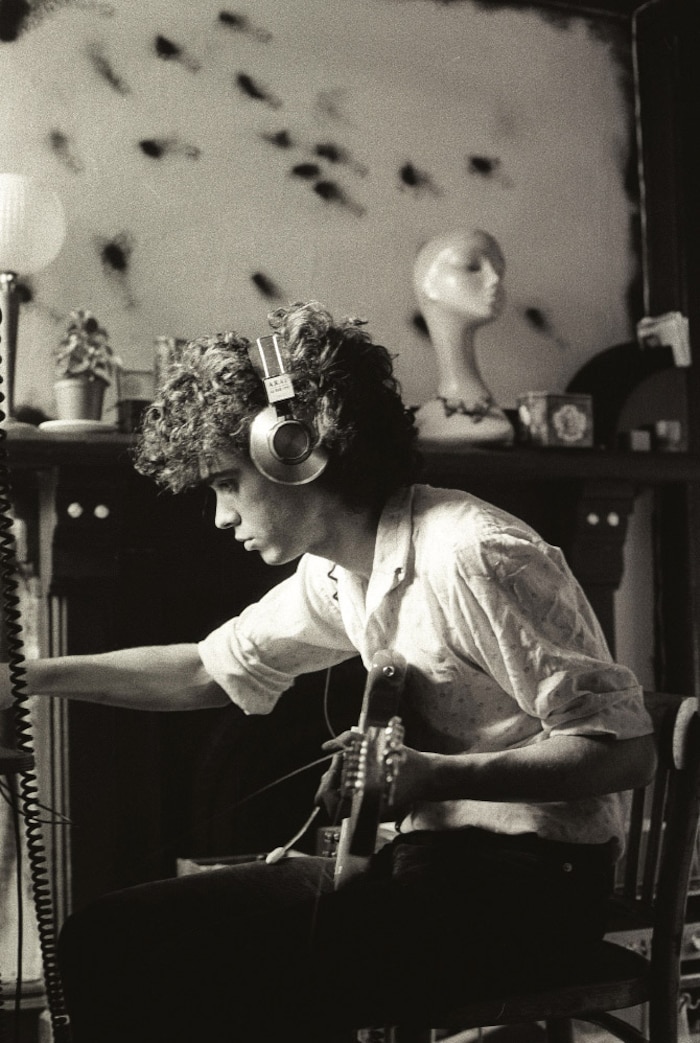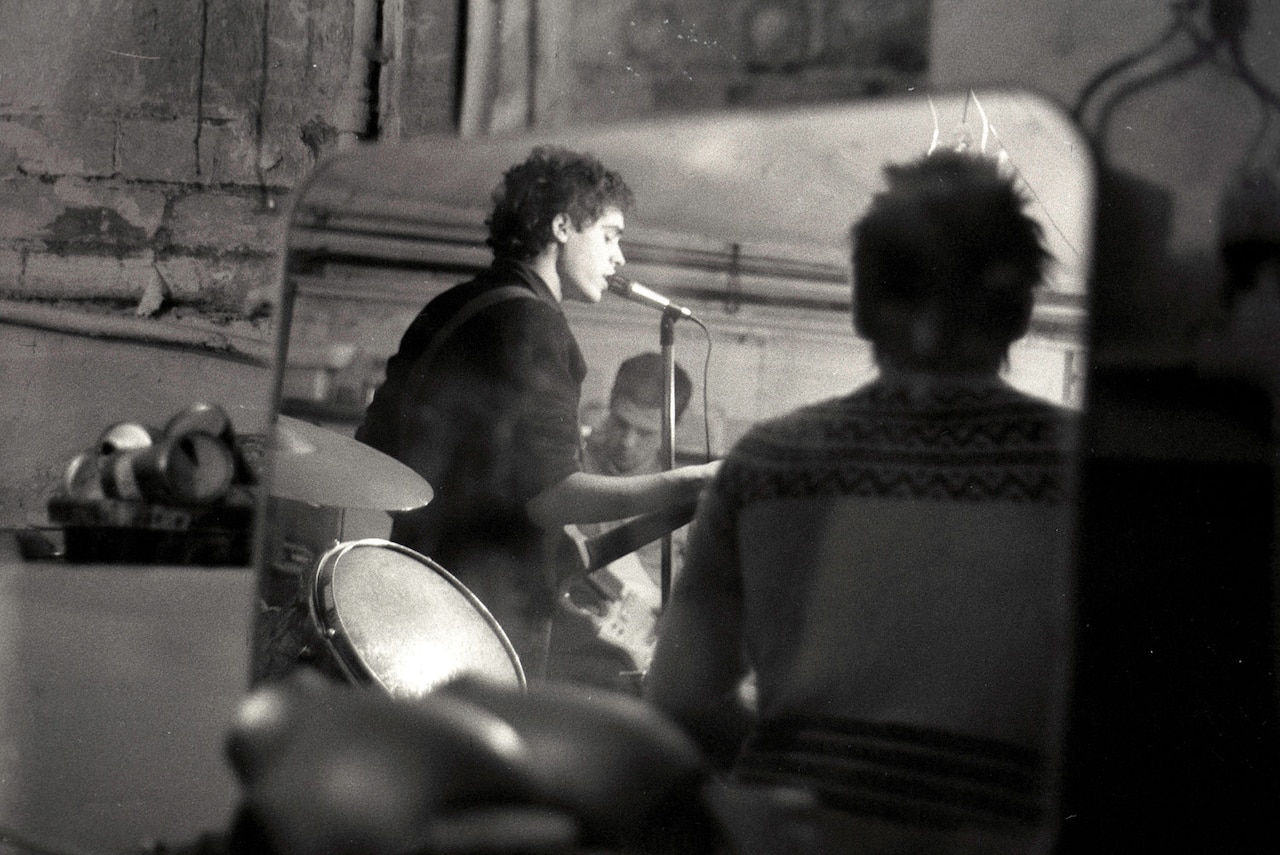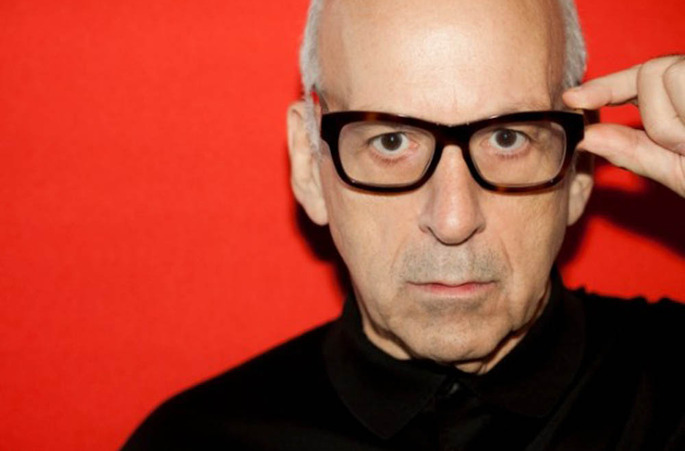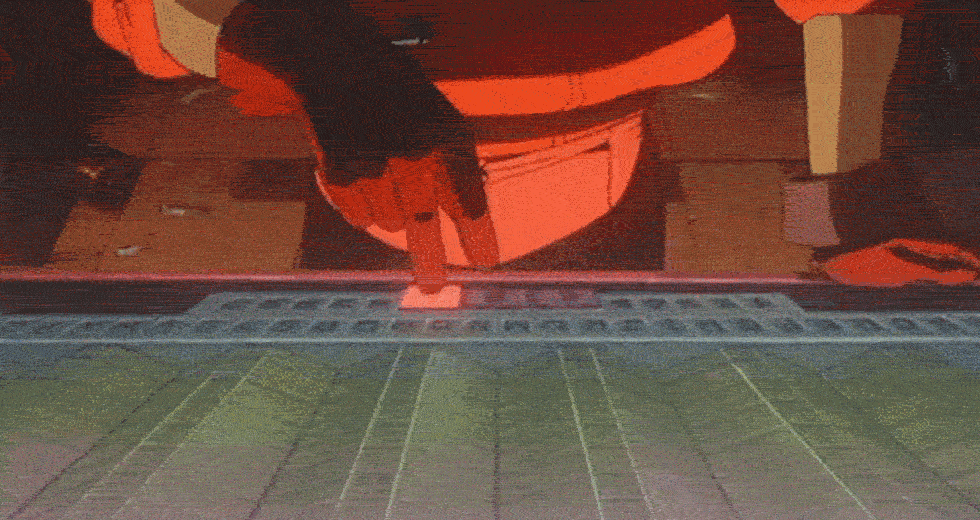Interview: Acid House and Post-Punk Engineer Rico Conning
The man behind the boards for Baby Ford and Swans talks in advance of another reissue from his ahead-of-its-time post-punk band
On the surface, post-punk and acid house may not appear to share much. The first was spiky, confrontational, anti-virtuosity. The second was synthesized, escapist, colourful. Squint, though, and you’ll see lines that connect the dots. Not just the hedonism of those scenes, their inclusivity or their DIY nature. But the way in which the first movement’s dreamers helped to shape the latter’s.
Rico Conning was a resident engineer at Guerilla Studios through the 1980s and early ’90s, the London music hub run by William Orbit and Laurie Mayer. Conning helped oversee a seismic shift in ’80s cutting-edge music, enhancing the sound of acts as varied as Swans, Jah Wobble, Depeche Mode and Pere Ubu, before putting his magic touch on hugely influential U.K. dance records like Renegade Soundwave’s proto-hardcore cut “The Phantom” and several tunes for Baby Ford and Bomb the Bass, as well as William Orbit’s 1987 Balearic beat album Strange Cargo.
Conning’s remarkable ear was honed as part of his band The Lines, who recorded a handful of incredible though mystifyingly overlooked EPs, singles and albums at the end of the ’70s and in the early ’80s. Their records have recently been unearthed and reissued by Acute Records, with their third album, the previously unissued Hull Down, due to finally see the light of day this May.
The Lines blended scratchy post-punk atmospheres with dub, disco and primitive electronic textures in a fashion that sounds disarmingly modern. Conning took that futuristic vision and stamped it on his production, engineering and remixes, bridging the gap between the DIY spirit of his band, the electro pop of the ’80s and the sonic possibilities of the acid house explosion.

Your material with The Lines sounds very modern. Was there a sense that what you were making with the band was almost too early, that you didn’t get the recognition you deserved?
We certainly felt that. Everyone who fails says, “Oh, we were ahead of our time,” but I don’t know about that really. At the time we wanted to carry on and thought we had something really good, but we just… it all became too much. In the environment of that time, 1982-3, it was all Trevor Horn and massive productions. Of course New Order’s “Blue Monday” came out, which was somewhat in the vein that we were working, but it was so fucking brilliant that I was a bit dispirited by that. So in ’83 The Lines fell apart, mainly through financial reasons. We all had to work on other things to live. I went into engineering, I wanted to expand my experience and knowledge in that sort of thing.
Was Guerilla Studios the first place you went to learn your trade?
We’d done some demos at Guerilla. Good friends of ours, William Orbit and Laurie Mayer ran it, and in ’82 they asked me to come and work there. They had a pretty good 8-track setup going, and wanted to do commercial sessions, get some money in. I wanted to engineer, so I said yeah.
What was the first thing you worked on?
The first year, apart from The Lines and Torch Song stuff – that was William and Laurie’s band that I later joined – in the first year it was really ragtag, I can’t really remember anything exciting. There was some library music, which was a good experience, and some forlorn singer-songwriters who didn’t really have it together. But as soon as we went 24-track, it really started to happen. The first session that really had an impact was a Le Disques De Crépescule session, with Winston Tong [of Tuxedomoon] singing. It was for Winston Tong’s solo album. Jah Wobble was on the bass, Billy Currie [Ultravox] was on keyboards. Alan Rankine [The Associates] on guitar. It was an indie superstar session, ’83 style. That was the first one that really made a big impression.
Your music as part of The Lines had aspects of electronic music and dub. Did those influences feed into the early U.K. dance stuff you worked on, like the Colourbox self-titled album? Did you put your own stamp on that?
We certainly clicked very well. I don’t know how much of my stamp I put on Colourbox, because Martyn Young is such a fucking genius. I learnt a lot from him, I tell you. Those were very early days, around ’84. MIDI had just started up, there were very new things coming along. Both the engineers and artists were trying to keep up. But Martyn from Colourbox, there’s a guy who can just walk up to a piece of gear and in five minutes he’s got some kind of instinct for it.

You remixed Coil and Depeche Mode with Daniel Miller [who made music as The Normal and later founded the Mute label]. What techniques were you using at this point, what kind of equipment?
It was an evolving thing at the time, the remix. When I first started doing remixes, around ’85, it was really just chopping up the track, re-editing it, put it through different effects. One technique I’ve always loved is triggered noise gates, finding a rhythmic element to trigger the noise gate sidechain. I’d build up a different rhythm just from triggered noise gates. That was my favourite thing to do.
But then samplers… there were samplers, but they were super-expensive, like Fairlights and stuff. Around ’85, that’s when Emulators came in, then Akais came in. Sampling became available to people who weren’t rock stars, basically. That became part of the remix process and that’s when we started really changing tracks. It was Daniel Miller who gave me the confidence to really do that.
The first remix we did was Laibach, which wasn’t released, a mix of “Life Is Life.” It was fucking amazing. Imagine The Normal as a backing track to Laibach! But they rejected it, “This is not the style we wanted.” That was the first time we really took apart a track with a new backing track, and then put the vocals back on it. That was around ’86.
What specific equipment did you use on that?
Daniel would bring his rig in. He had an Arp Odyssey, the Synton Syrinx, that’s a pretty incredible little synth. The EMS Suitcase Synthi. That was his axe, really, he’d do amazing stuff with that. I guess in ’86 I got my first Akai sampler, ’87 was when the SP12 came in, I got really good on that. Those were the kinds of things we were using on remixes around that time. Daniel had a Synclavier, but he didn’t really use it much. He preferred to use his old analogue synths.
To what extent did U.K. club culture influence you at this time?
Very much. I wasn’t going out all that much ’cause I was working all the time, but sometimes after a session we’d go to a club. It didn’t make all that much impression on me until ’88, when house came in and that made a big fucking impression.
Did the acid house explosion in the U.K. feel like a sea change?
Definitely. The biggest sea change.
You later started working with U.K. house/breakbeat/hardcore pioneers Renegade Soundwave. What were your memories of engineering their material?
They were three of the most talented people I ever worked with. They were good memories. I didn’t work on that many tracks of theirs, the first one was “Cocaine Sex.” I loved it. But “The Phantom,” I still really love that one. That was a one-night session. I went in and mixed it, I put a few sounds in there, a few of those synthy little sounds. That’s a great track. That was how it was, you’d do everything in one night.
That was an early dance track to use breakbeats as well – which had been happening in hip hop, of course, but not really in acid house...
Danny from Renegades was the first person I worked with who was a real wizard at blending samples in that way. He was very good at that.
In ’89 you worked with Baby Ford too...
He was great, a laugh a minute. A very underrated singer. He went totally techno later on. He was good fun. The last thing I did with him was a remix of “Let’s Talk it Over,” which I liked a lot.
How did working on that kind of music differ to earlier records you’d engineered? Stuff that was more synthetic. Did the process change?
It evolved. With Renegades, it was mainly a mix thing ’cause they had all the samples put together. I had some vocals to do with Gary. Sometimes I’d get to contribute a synth part like in “Cocaine Sex.” I added a bass part on the Juno 106, and on “The Phantom” there are those bits in the background. But then with Baby Ford, I worked with his programmer Richard Salt, who was really good. So it was mixing, suggesting things. You have to have a lot of different disciplines. One day you’d be doing something electronic, the next day you’d be doing guitars.
You were also mixing a lot of post-punk records at the same time, stuff by Wire and Pere Ubu. Was there a particular way of working for all the material you mixed or produced?
I think it helped that I love guitars and I love synths. I don’t see any kind of conflict in using them together. I think it definitely helped that I had a good feel for guitar bands and synth bands. Bands that combine things.
Digital saves so much time. People underestimate how much time in the day was spent winding the tape back!
Were there any other specific techniques you particularly liked to use that were coming through at the time?
Everyone has their specific way of using reverbs and delays. That’s sometimes underestimated, the importance of, for instance, what order you put the reverb and compressor, how much of the dry signal is there with that. To me, the thing that makes anyone’s mixes distinctive is how they approach that.
Regarding compression, it’s a technique that has become more extreme with each ensuing decade, making music louder and louder. Where did you stand on it?
I always liked it. In Guerilla, we had a bunch of DBX 160X compressors, they were really nice. The thing is, back then you were using analogue tape – the more you’d compress, the more noise would come up. You’d have to use noise gates. That’s how a lot of ’80s records ended up sounding the way they did. Gated reverb, a lot of that was just people slapping noise gates on things so the noise floor wouldn’t come up so high. You had to be very careful with compression – now it’s a dreamland, you’ve got fantastic plugins. Noise isn’t really an issue, in fact you might want to have more noise to make it sound a bit more organic.
Do you see digital as a positive development? What are the benefits of analogue?
I don’t know about whether it’s better, but tape has a great sound on drums. You just can’t beat it. But with digital, time is precious and that’s basically what it comes down to. Digital saves so much time. People underestimate how much time in the day was spent winding the tape back! A third of the fucking day. Obviously you were talking, making notes, planning, but every time you wound it back and played it, the sound got a miniscule amount deader. The tape wore down. If you were on a really intensive session, you had to worry about that. If you made an analogue copy, that had more hiss on it. Analogue is fantastic but it was a nightmare to deal with, lining up the machines. All kinds of stuff. But it was very tactile, I loved editing, loved tape.
You mentioned the Laibach record, the remix you did, what other record that you worked on was your favourite?
“The Phantom” stands out. “Children of God” by Swans. That might be the one, historically speaking, that people regard as the best thing I had a hand in.
I added a sense of space. I didn’t skimp on the reverbs. I had a vision. They were like a big machine, Swans. Loud, heavy, that you wanted to stand next to ’cause it sounded so cool. Loud, menacing. They had Jarboe, so they had this feminine side going on as well. Somehow I helped bring this whole spacious feel. The way I used reverbs was why I think Michael [Gira] wanted to work with me.

